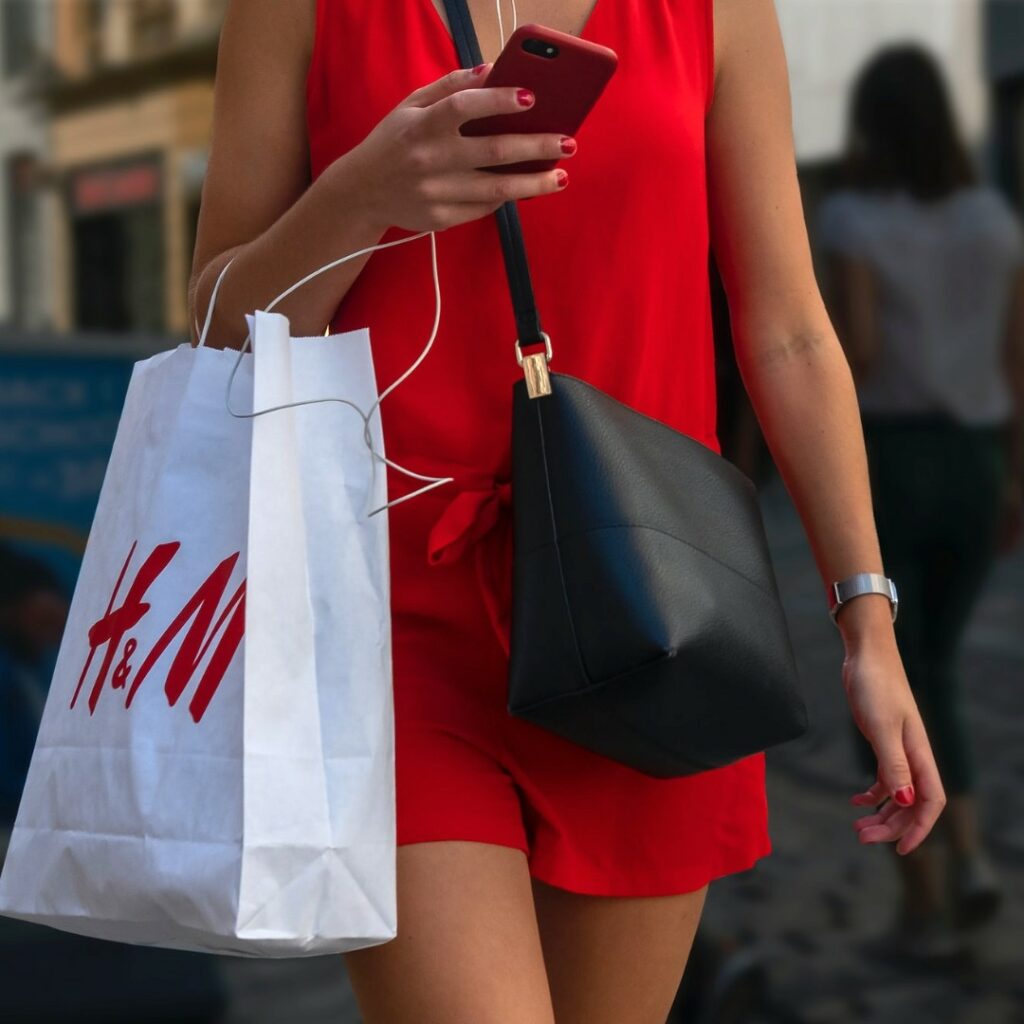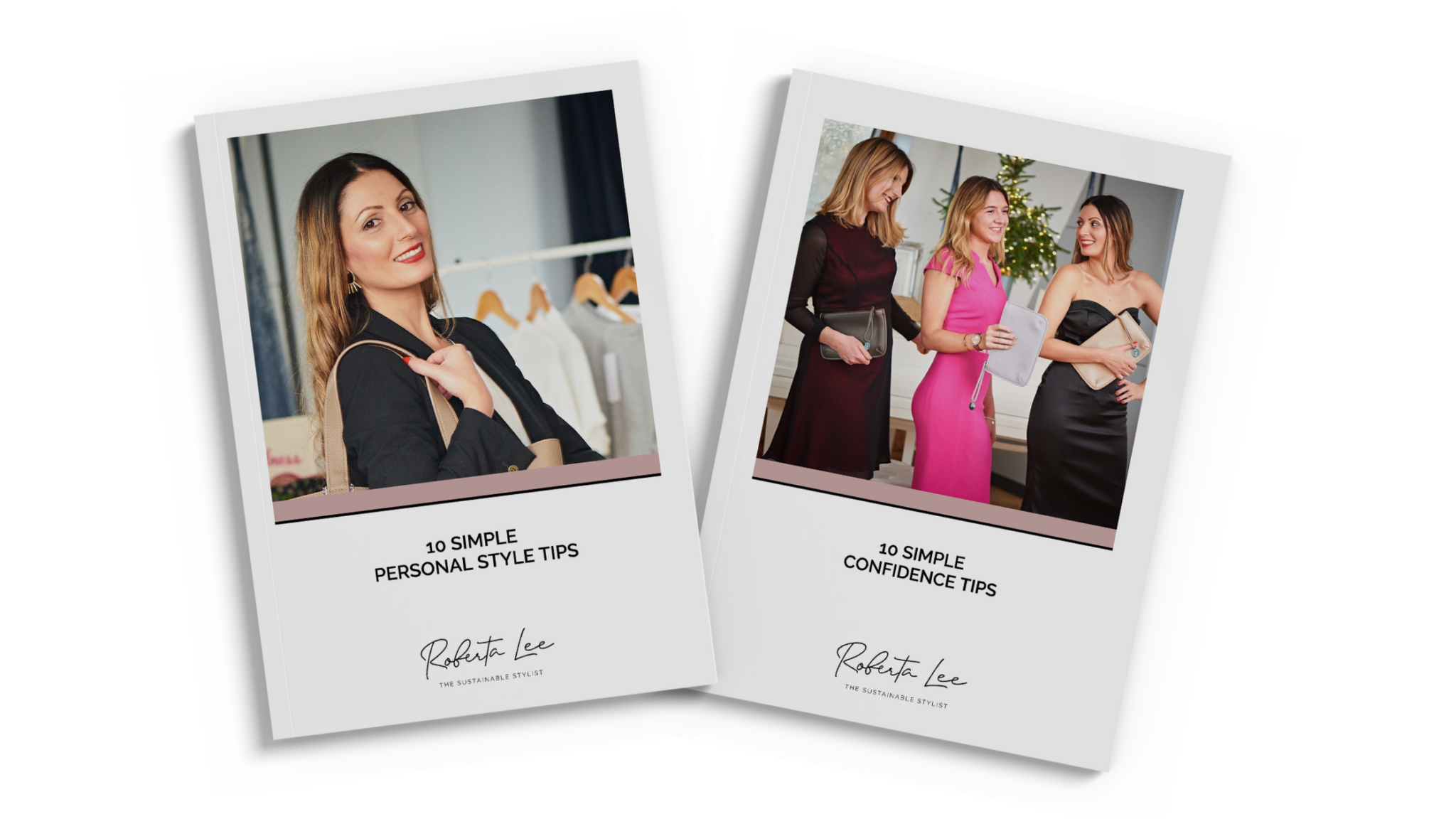Clothing has become disposable, and we’ve lost sight of what quality looks like and what it costs. It is difficult to ask those who are used to spending the same money on clothing as a takeaway to look at what they wear as an investment.
However, the future of our planet, our health and personal wealth depends on it – we must transition back to a place where quality beats quantity!
I am a great believer that knowing your style can not only make you feel great, but it can help save the planet too. This is why I champion #100wears and I’m a loud and proud # outfitrepeater.
Fast Fashion Facts
“We are increasingly disconnected from the people who make our clothing, as 97% of items are made overseas. There are roughly 40 million garment workers in the world today, many of whom do not share the same rights or protections that many people in the West do. They are some of the lowest-paid workers in the world, and roughly 85% of all garment workers are women.” – The True Cost
“33 % of women consider clothes ‘old’ after wearing them fewer than three times” according to a survey by Barnardos Retail in 2015. The reasons stated were due to changes in weight (49%) and unplanned items that were purchased on a whim (23%).
“Global clothing production has doubled in the past 15 years, with garments on average being worn much less and discarded quicker than ever before.” – Ellen MacArthur Foundation
“Nine out of ten workers interviewed in Bangladesh cannot afford enough food for themselves and their families, forcing them to regularly skip meals and eat inadequately, or go into debt.” – Oxfam Made in Poverty Report
Why are our clothes so cheap?

“The pressure on brands to get trends from catwalks to our backs cheaply, and deliver profits for investors, can lead to an unseemly bunfight to secure the cheapest source – a phenomenon critics refer to as ‘chasing the needle’ around the world.” – BBC News
The average price point for women’s clothing is much cheaper for us due to the constant push of new trends, from the factory to the shop floor at the cheapest possible price. To get it ‘that’ cheap, it has to be outsourced to countries where costs are low and regulations are light.
Products aren’t designed to last, and we, the consumer, are in a constant state of FOMO (fear of missing out) on a bargain and not being able to get ‘THAT’ dress or skirt or jacket that’s trending on #wiwtoday over on Instagram.
Are luxury designer clothes made better?
Orsola de Castro, co-founder of Fashion Revolution told the BBC: “There are two great misconceptions when it comes to sustainability and ethics – one is that the culprit is fast fashion, and this lets the luxury sector off scot-free, when in fact it is the entire Ethiopian fashion industry that needs to be called into question,” She also pointed out that just because it states “its “locally-made it’s ethical and sustainable. It isn’t.”
The retailers know ‘how’ to spur on the relentless cycle of feeling like we need something ‘new’ all the time. That’s why new stock that appears in fast-fashion retailers like BooHoo, Pretty Little Thing, ASOS and high-street giants like H&M and Topshop every week.
It’s just too much, too much clothing is being produced every day, and cheaply mass-produced fashion comes at a detrimental cost to all of us, and the hard truth is most of us don’t even realise what we’re supporting.
We shop on autopilot… I used to be this way for years, so I can relate all too well.
The True Cost of Fast Fashion

Now, many years after being ‘woken’ to the truth of the fashion industry, I understand that it’s not realistic at all for a T-shirt to be sold at £4; it can’t cost the same as a latte if it has been created ethically and with respect to the environment using sustainable, low-impact processes.
No argument on the planet can convince me that a garment at that price point can be made fairly and with minimal impact on the environment. Perhaps Boohoo, who made the £1 bikini, would care to comment? I know it was meant to be a loss-leader product to help with their overall marketing, but a £1 bikini…. that does nothing for helping people understand the true cost of clothing. I wonder how many of those £1 bikinis ended up in the bin…disregarded like a single-use wrapper?
The fashion industry is resource-heavy, let’s think about each step for a moment… I will focus on the people, but don’t forget that a lot of natural resources are required for each step, and the negative impact is created with each one.
- It requires lots of people to grow and maintain the crops
- To harvest it once it’s ready
- Turning that crop into yarn (processing)
- For that yarn to become material (spinning)
- For that material to become a certain colour (dying)
- Shipping textiles off to factories
- The material then needs to become a garment (cut, stitched and then packaged up)
- Then garments are transported across the globe to where the brand that has outsourced the process wants the product to be sold.
Now, considering the processes above, does it seem possible that a T-shirt can cost £4 and that everyone involved in the process is fairly paid?
Do you think that environmental standards and steps to protect our planet and local ecosystems where the items are dyed are being done safely?
Style and Confidence:
your path to empowerment
Whether it’s your style of inner confidence that needs a boost – I’ve got you covered.
It is not possible, yet sadly, we’ve been conditioned to accept that this is OK to shop cheaply, regardless of the price that other people and the planet have to pay.
Sustainable Shopping Advice
My sustainable shopping advice, as always, is to:
- Use more of what you already have
- Shop your own wardrobe
- Mend, alter, reinvent and repair,
- Borrow, rent, thrift
- And when all those options have been explored, shop ethically instead.
Use your purchasing power wisely. I recommend searching the Ethical Brand Directory for brands I trust or checking out my blog reviews for products I have tried and tested myself.
If you need any help with personal shopping, let me know. I will help you find the things you need using the most ethical and sustainable options available to me.
Or at very least, only direct you towards things you’ll use at least #100wears. I run a non-judgmental policy here. I will work with you no matter where you are in your sustainable style journey, as long as you are open-minded to building a long-lasting sustainable wardrobe and will only buy things new if you believe they’ll get #100wears.








1 thought on “The problem with fast fashion”
Fashion is a celebration of diversity. It’s inspiring to see people from various backgrounds, body types, and walks of life embracing their individual styles and encouraging inclusivity within the industry.”